order
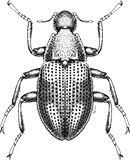
Coleoptera
“Adult Beetles”

Coleoptera
“Larval Beetles”

Diptera
“True Flies”

Ephemeroptera
“Mayflies”
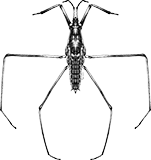
Hemiptera
“True Bugs”

Lepidoptera
“Aquatic Caterpillars, Snout Moths”

Megaloptera
“Alderflies, Dobsonflies, and Fishflies”
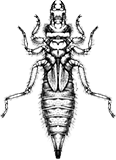
Odonata
“Dragonflies and Damselflies”
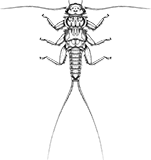
Plecoptera
“Stoneflies”
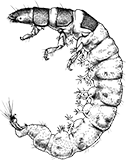
Trichoptera
“Caddisflies”
family
Psychomyiidae
genus
Lype
“Net-tube Caddisflies”
Genus Overview
Only one species, Lype diversa, in North America. Larvae construct a silk hide open on both ends to allow water to flow through. They are found on wood debris.
Characteristics
POLLUTION TOLERANCE
Southeast: 4.3
Upper Midwest: 2
Midwest: 2.8
0 = least tolerant, 10 = most tolerant
FEEDING HABITS
Scraper / Grazer
MOVEMENT
Clinger
DISTRIBUTION
Widespread (east of the Rocky Mtns.)
HABITAT
Lotic-erosional
Diagnostic Characters
order
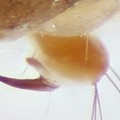
Prolegs With Single Hook
family
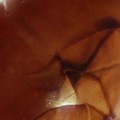
Hatchet-shaped Foretrochantin
+ Expanded Character List
Order:
Larvae: Wings/wing pads absent. Eye spots present, but compound eyes absent. Antennae usually small, inconspicuous. Three pairs of segmented legs present on thorax. Pair of anal prolegs, each with single hook, located on last abdominal segment. Larvae can be free-living, in silken retreats attached to substrate, or in usually-portable tubes or cases made of sand, rocks, or plant material.
Family:
Antennae small, nub-like, and inconspicuous. Foretrochantin broad and hatched-shaped. Meso- and metanota membranous. Abdominal tergum IX membranous. Larvae creating stationary retreats composed of sand and detritus, usually built on rocks or large woody debris.
Genus:
Large cleaver like trochantin, head two toned without muscle scars, mandibles lacking prominent bump

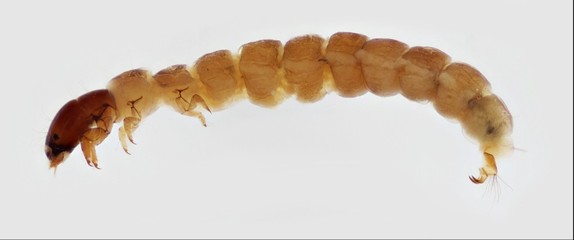

Dorsal
Lateral
Ventral



